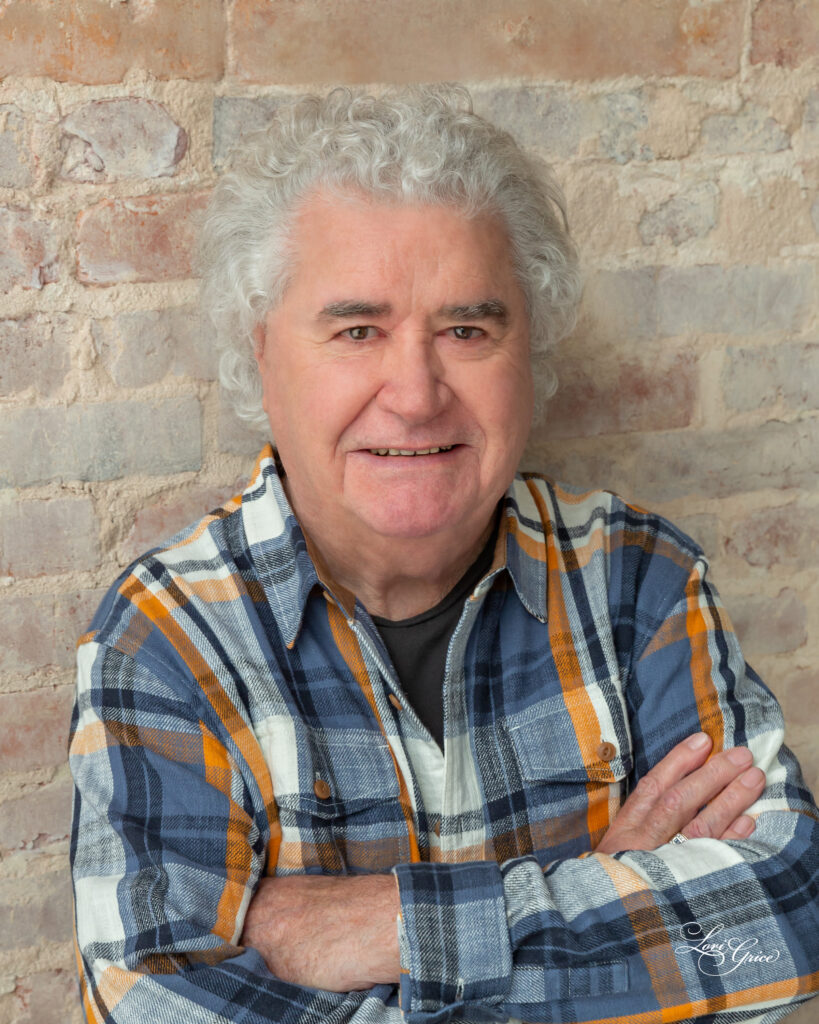By Richard John Stapleton
The title of this article came to me as I was pondering some recent experiences. I thought it had an allegorical ring to it, so I posted it standing alone as a comment on my Facebook page. But after giving it more thought I decided it was absurd standing alone so I trashed it. But waking up today I decided it did make a little sense so I re-posted it with the following attached.

At age 83 I have been having arthritic-like pain with my bones and joints, especially in my left knee. I had knee problems playing football in high school. Had to wear braces on both knees on the football field my senior year in high school.
A friend who had undergone some physical therapy for knee problems told me recently about a technique for standing up she had learned in her process of treatment. I have been using it for a few weeks and by golly it worked. The pain in my left knee has about gone away. All you have to do to strengthen your knees when you get up and out of a chair is put your knees together, clasp your hands together, hold your arms out and up, and stand up straight.
To maximize the benefits of the process you also need to do this when you sit down in the first place. It's not easy but it strengthens muscles and ligaments above and below your knees, in my case lowering and lifting about 180 pounds of weight (210 pounds total weight minus approximately 30 pounds in my legs doing the lifting) maybe half the times I stand up or sit down in the house (it would look a little strange doing this out in public but it could be done there).
As to the walking in a straight line phrase in the above utterance, since my left leg, the leg with the worst knee, is 5/8 of an inch longer than the right one, I have always had a tendency to walk in curved lines. Because of muscle and ligament realignment caused by my new way of lowering and lifting myself in and up and out of chairs it's now easier to walk in a straight line.
On the other hand, the above utterance is not as absurd for all Earthian humans as it might seem, being somewhat metaphorical, since it generally behooves everyone to walk in a straight line achieving goals and getting things done, not getting distracted by irrelevancies causing you to walk around in circles, getting nowhere.
And one thing most older people need to do to maximize their chances of living as long as they might is to lift themselves up and out of chairs and walk anywhere, not only to slow the degeneration of their muscles, ligaments, and joints, but improve their blood circulation.
ABOUT THE AUTHOR
Richard John Stapleton, PhD, CTA would spin the spinner of his Classroom "De-GAMER" in his classes to randomly select a student at the beginning of each class session to lead a democratic discussion of the case assigned for the day, a case taken from a planned or operating business prepared by case writers at Georgia Southern, Harvard, Stanford, and the University of Alabama.

Stapleton sat in the same circle in the same kind of chair as students, and the De-Gaming rules also applied to him. If the Classroom "De-GAMER" landed on him he had to lay out the case just like any other student and discuss what was the problem, what were the alternatives, and what he recommended.
Grades were based eighty percent on class participation in dialectical discussions about what to do about problems and opportunities found in cases; the rest of the final grade was based on two case write-ups. One write-up was about what the student observed, researched, analyzed, and wrote about an existing business in the local environment or a business plan the student created. The other write-up was an analysis of a case researched and written by professors about a business assigned as the final exam. Cases used in his courses contained processes, problems, opportunities, and data occurring in all functional areas of business such as entrepreneurship, finance, marketing, operations management, control, management information systems, and business policy and strategy.
He has published refereed journal articles and books explaining how his democratic GAME-free Adult-Adult I'm OK-You're OK case method system works, by banishing Persecutors, Rescuers, and Victims playing psychological GAMES from the teaching and learning process, first documented in an article titled "The Classroom De-GAMER" he published in 1978 in the Transactional Analysis Journal. He has published seven books and over one hundred articles in various media containing cases, research data, and essays on teaching and learning and management policies and practices.
Stapleton learned and trained using transactional analysis with Martin Groder, MD; Graham Barnes, PhD; Vann Joines, PhD; and many others at the Southeast Institute at Chapel Hill, North Carolina (1975-1978).
He was a Harvard Case Method teacher who never went to Harvard, having learned how the case method works teaching with Bernard Bienvenu, DBA and Rexford Hauser, DBA (Harvard Business School doctorates) at the "University of Louisiana" Lafayette in 1969-70.
He has a BS in economics (1962), an MBA in organizational behavior (1966), and a PhD in management science (1969) from Texas Tech University, and an organizational and educational certification in transactional analysis (CTA) from the International Transactional Analysis Association (1978).
He taught his own case method track at the undergraduate level in the management department of the business school at Georgia Southern University offering four or five different elective case method courses each academic year (1970-2005), in which he led, coordinated, and graded about twenty-five or so students each year who took all or most of those case method courses in their junior and senior years, of about two hundred students who signed up for all his courses each year. He used a democratic circle or amphitheater classroom layout in all his classes. He also taught most semesters two sections of a capstone integrative business policy course he added to the business school curriculum in 1970 that was required for all undergraduate business majors that could be elected by any student in any major. He was the only professor in the business school to use the case method in any course.
His students agreed to a course learning contract that stipulated they would read the facts of the case before class and would lose a whole letter grade from the course final grade if the De-GAMER randomly caught them obviously not having read the case before class, if they had not slipped a note under his office door before class telling him they had not read the case, which they could do twice during the course without penalty.
About ten percent of his students made A's and about five percent made D's. Most made C's, which is about right, since C = Average. There were few F's in his courses. The main criterion for course grades was the quantity and quality of ideas sold by students in case method discussions. He used peer ratings to give students feedback showing what their fellow students thought about the quantity and quality of their ideas sold in class, having made it clear the final decision about final grades was his. He did not believe in Lake Wobegon grading.
No student was ever forced to take one of his courses to graduate, and the most hardened Game-players in the school did not sign up for his courses after he issued his Edict of 1972 in which he clearly spelled out in his syllabi the penalty for getting caught unprepared. His Classroom "De-GAMER" was roundly discussed by students in bull sessions across campus every year and was labeled various things, such as The Wheel of Fate and The Death Wheel. Most students near the end of his career simply called it The Spinner.
He appreciated Georgia Southern honoring his academic freedom by allowing him control of his teaching methods, classroom layouts, grading procedures, and course books, cases, and materials, some of which he researched, wrote, and published. He was promoted to full professor at age thirty-six.
He solicited anonymous longitudinal research data using questionnaires in 1992 showing his case method students during 1972-1982 reported higher yearly incomes in 1992 than students electing the same courses in 1972-1982 taught by professors using the authoritarian lecture method and the militaristic row and column classroom layout, who graded students based on memorizing or calculating "right answers" for tests, indicating learners learning in Adult-Adult I'm OK-You're OK GAME-free democratic learning processes graded subjectively became more successful in the real world of business than learners lectured to and graded using so-called objective multiple-choice tests.
Only former students who had worked in the real world ten or more years after graduating from the Georgia Southern business school were included in the study. The data are shown, analyzed, and discussed in full in "Evidence the Case Method Works" in his book Business Voyages: Mental Maps, Scripts, Schemata, and Tools for Discovering and Co-Constructing Your Own Business Worlds, 2008, pg. 475). The data were also used in several refereed articles.
The ancient Greeks used a similar random-selection democratic process in the Third Century BCE to select leaders of political discussions, learning, and policy formulation in their halls of government. Such a process is called sortition.
For more information on related classroom management ethical issues see Stapleton, R.J. and Murkison, G. "Optimizing the fairness of student evaluations: A study of correlations between instructor excellence, study production, learning production, and expected grades," in the Journal of Management Education, 2001, 25(3), 269-292.
Stapleton had one of the lowest student grade point averages among professors in the business school and was one of the lowest-ranked professors as an instructor on computerized campus-wide student evaluations that weighted only instructor excellence scores up to 2000; but he was one of the highest-ranked professors in a computerized student evaluation he designed that generated data also showing and weighting study production, learning production, and expected grades scores for each professor, published in "Optimizing the Fairness of Student Evaluations."
After this research was published, Georgia Southern in 2001 added study production, learning production, and expected grades questions to the student evaluation form used campus-wide.
"Optimizing the Fairness of Student Evaluations" has by now (December 14, 2024) been cited as a reference in 90 refereed journal articles concerned about the ethics of student evaluations in several academic disciplines, including 16 new citations since April 2021, proving the article is still being read and used.
As the philosopher Ludwig Wittgenstein propositioned in his book Tractatus Logico-Philosophicus, "The case is all there is."
If so, everything else said about Earthian human states of affairs is a rendition of what was or might be.
For more on Stapleton's cultural, educational, and professional experiences see "RJS Academic Vita,"
Feel free to share this article any way you see fit.




